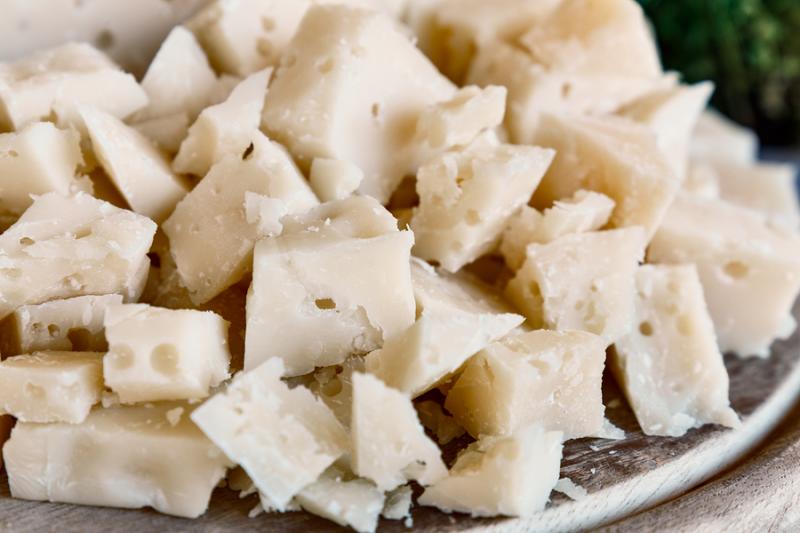Millennia before cacio e pepe became one of the Eternal City’s trendiest pasta dishes and a social media sensation, its starring ingredient graced the tables of Roman emperors. Cacio refers to Pecorino Romano in Roman dialect, and its origins go back to the aged sheep’s milk cheese that was prized by the ancient Romans. They depended on it as an important source of nourishment for legionnaires—its nutritional value and ability to endure on extended marches made it an ideal food for the soldiers, who were allotted a daily ration of 27 grams.
Pecorino Romano today is still made from rich sheep’s milk (pecorino comes from the Italian word for sheep, pecora) and the cheesemaking process closely follows the traditions of the ancient Romans. But most of it is now produced on the island of Sardinia, rather than in the countryside around Rome and Lazio. So why the shift?

For starters, Sardinia is a natural source for the essential raw material—sheep outnumber people on the island by over 1.3 million! And by the end of the 19thcentury, cheesemakers in Lazio no longer had enough milk from their flocks to meet the demand for Pecorino Romano, according to Daniela Murgia, Marketing Manager for the Consortium for the Protection of Pecorino Romano. At that time, several producers moved their cheesemaking operations to the island, where the indigenous Sarda sheep graze on pastures filled with native herbs and grasses. Today, 96% of the production of Pecorino Romano takes place in Sardinia, the second largest island in the Mediterranean.

In 1996, Pecorino Romano was awarded PDO (Protected Designation of Origin) status from the European Union, which guarantees that its production takes place in a specific geographic area (in this case, the regions of Sardinia and Lazio, and Lazio’s neighboring Tuscan province of Grosseto) following strict regulations. The cheese is made with fresh sheep’s milk from October through July, the natural milking season for sheep, and the animals’ diet of aromatic herbs and grasses from the pastures where they graze imparts wonderful flavor to their milk. The barrel-shaped wheels are aged a minimum of five months, and salt is typically rubbed on the cheese three to six times throughout the maturation period. This process helps preserve the cheese and also enhances flavor.

You can identify authentic Pecorino Romano by the name etched in dotted letters on the rind, along with the sheep’s head enclosed in rounded diamonds. The cheese is pleasantly salty and robust, with a crumbly texture and richness from the sheep’s milk, which has more protein and fat than both cow’s milk and goat’s milk. The flavor becomes sharper and spicier as it matures, which is why Pecorino Romano intended for grating is aged for a minimum of eight months. The cheese is a staple in the kitchens of many southern Italians and Italian Americans in particular—of the roughly 342,000 tons that were produced in the 2017-18 season, 55% was exported to the US. In Italy, the majority is sold in Lazio, Puglia, and around Naples.

Pecorino Romano is a quintessential ingredient in beloved pasta dishes such as carbonara and amatriciana, but its versatility goes well beyond these classics. On a recent trip to Sardinia hosted by Uncommon Flavors of Europe, I had the opportunity to try it in many unexpected ways. Chef Leonardo Marongiu of the restaurant Hub in Macomer incorporated the cheese in innovative plates such as octopus in a Pecorino Romano broth, pasta (pipette) stuffed with a decadent cream made by blending the grated cheese with water, and even a delicious dolce: Pecorino Romano crema bruciata (the Italian equivalent of crème brûlée) with cherries macerated in red wine.

Like this? Don't miss "Did You Know Some of Italy's Best Cheeses are in Le Marche?"
Another night, I had a simple but amazing antipasto consisting of a thick slice of grilled Pecorino Romano (like halloumi, the cheese has a very high melting point), prosciutto crudo, and red onion marmalade. This was one of my favorite dishes of the entire trip, and one that can be easily recreated at home. So don’t be afraid to think outside the box when cooking with Pecorino Romano! It’s also a zesty addition to a cheese board, and pairs especially well with honey, fruit such as pears and figs, or candied nuts. Pecorino Romano more than holds its own in the contemporary kitchen—this historic cheese has stood the test of time for excellent reason.
For more pairing and recipe ideas, click here otherwise check out the Italy Magazine recipe section with everything from first courses to dessert!












